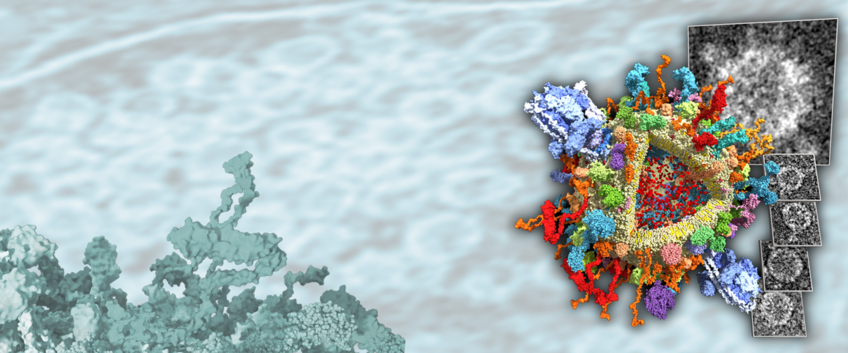
Publications of G. Vorbrüggen
All genres
Journal Article (29)
1.
Journal Article
Expression of the methionine sulfoxide reductase lost during evolution extends Drosophila lifespan in a methionine-dependent manner. Scientific Reports 8, 1010 (2018)
2.
Journal Article
In vivo super-resolution RESOLFT microscopy of Drosophila melanogaster. eLife 5, e15567 (2016)
3.
Journal Article
The GTPase Rab26 links synaptic vesicles to the autophagy pathway. eLife 4, e05597 (2015)
4.
Journal Article
Analyses of fruit flies that do not express selenoproteins or express the mouse selenoprotein, methionine sulfoxide reductase B1, reveal a role of selenoproteins in stress resistance. Journal of Biological Chemistry 286 (34), pp. 29449 - 29461 (2011)
5.
Journal Article
Reception of Slit requires only the chondroitin–sulphate-modified extracellular domain of Syndecan at the target cell surface. Proceedings of the National Academy of Sciences of the United States of America 106 (29), pp. 11984 - 11988 (2009)
6.
Journal Article
Overexpression of methionine-R-sulfoxide reductases has no influence on fruit fly aging. Mechanisms of Aging and Development 130 (7), pp. 429 - 443 (2009)
7.
Journal Article
A novel stem loop control element-dependent UGA read-through system without translational selenocysteine incorporation in Drosophila. FASEB Journal 23 (1), pp. 107 - 113 (2009)
8.
Journal Article
alpha(PS2) integrin-mediated muscle attachment in Drosophila requires the ECM protein thrombospondin. Mechanisms of Development 124 (6), pp. 463 - 475 (2007)
9.
Journal Article
Mutations of the Drosophila zinc finger-encoding gene vielfältig impair mitotic cell divisions and cause improper chromosome segretation. Molecular Biology of the Cell 17 (5), pp. 2356 - 2365 (2006)
10.
Journal Article
Gain-of-Function Screen for Genes That Affect Drosophila Muscle Pattern Formation. PLoS Genetics 1 (4), e55 (2005)
11.
Journal Article
Heparan sulfate proteoglycan Syndecan promotes axonal and myotube guidance by Slit/Robo signaling. Current Biology 14 (3), pp. 225 - 230 (2004)
12.
Journal Article
A glutamate receptor-interacting protein homolog organizes muscle guidance in Drosophila. Genes & Development 18 (2), pp. 223 - 237 (2004)
13.
Journal Article
The class 2 selenophospate synthetase gene of Drosophila contains a functional mammalian-type SECIS. EMBO Reports 1, pp. 441 - 446 (2000)
14.
Journal Article
Drosophila segment borders result from unilateral repression of Hedgehog activity by Wingless signaling. Molecular Cell 6 (1), pp. 203 - 209 (2000)
15.
Journal Article
The Drosophila gene abstrakt, required for visual system development, encodes a putative RNA helicase of the DEAD box protein family. Mechanisms of Development 91, pp. 189 - 196 (2000)
16.
Journal Article
Localised expression of the Drosophila gene Dxl6, a novel member of the serine/arginine rich (SR) family of splicing factors. Mechanisms of Development 90, pp. 309 - 312 (2000)
17.
Journal Article
Restricted expression and subnuclear localisation of the Drosophila gene Dnop5, a member of the Nop/Sik family of the conserved rRNA processing factors. Mechanisms of Development 90, pp. 305 - 308 (2000)
18.
Journal Article
NUCB1, the Drosophila melanogaster homolog of the mammalian EF-hand proteins NEFA and nucleobindin. Mechanisms of Development 86, pp. 155 - 158 (1999)
19.
Journal Article
SelD homolog from Drosophila lacking selenide-dependent monoselenophosphate synthetase activity. Journal of Molecular Biology 274 (2), pp. 174 - 180 (1997)
20.
Journal Article
Embryonic expression and characterization of a PTx1 homolog in Drosophila. Mechanisms of Development 68 (1-2), pp. 139 - 147 (1997)